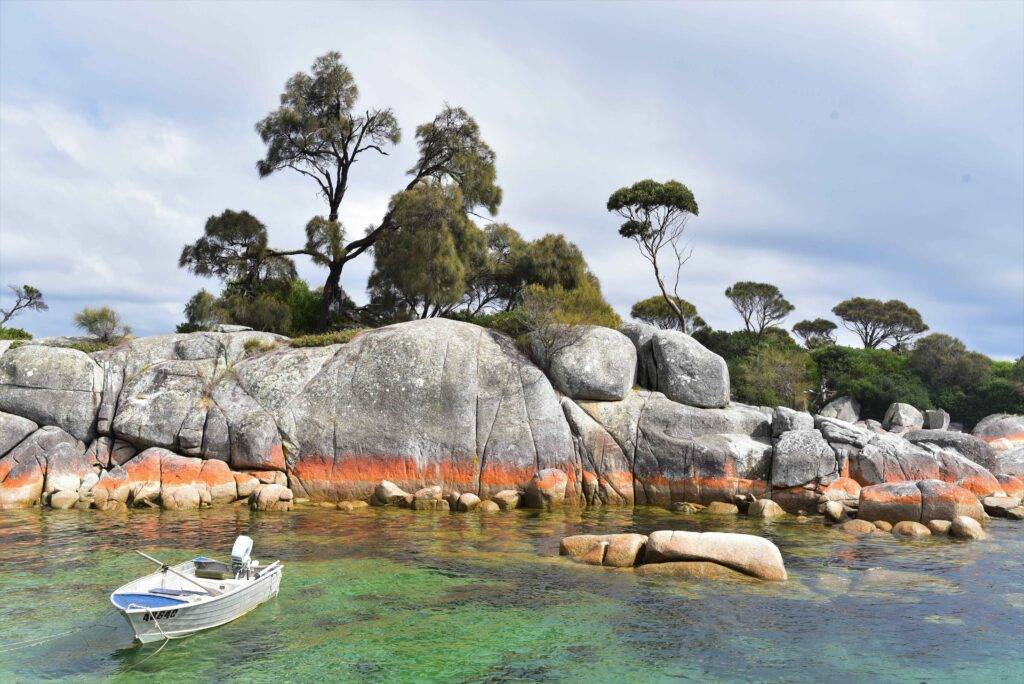This vast continent is a melting pot of ancient cultures, incredible landscapes, unique wildlife, and some of the most beautiful natural wonders to be found anywhere in the world. On one side, the warm waters of the Indian Ocean lap the shores of Western Australia, on the other, the indigo blue waves of the Pacific Ocean meet the eastern seaboard. What lies between is nothing short of exceptional.
Western Australia

Western Australia stretches the entire length of the continent from top to bottom and is unique in its diversity. From the friendly city of Perth, world-class vineyards, and ancient forests in the southwest, to the other-worldly landscapes of the Nambung National Park, the dolphins of Monkey Mia, magnificent the UNESCO World Heritage Area of Ningaloo Reef and The Kimberley, one of the most remote and pristine wilderness regions, in the north.
The east coast encompasses Queensland, New South Wales, Victoria, and the beautiful island state of Tasmania.
Queensland stretches from the far north to just south of Brisbane, and it’s jam-packed with the oldest rainforest in the world, stunning beaches, tropical islands, and prehistoric wildlife. Off-shore the natural wonder that is the Great Barrier Reef stretches for more than 1400 miles.
New South Wales and Victoria
Sit shoulder to shoulder and make perfect itinerary partners. The jewel in the New South Wales crown is the sparkling city of Sydney, sitting picture-postcard pretty on the largest natural harbour in the world, framed by the iron struts of the Sydney Harbour Bridge and the gleaming sails of the Sydney Opera House.
The hazy Blue Mountains and vineyards of the Hunter Valley give way to glorious beaches and seaside towns winding their way southwards across the Victorian border, to Melbourne. Often found at the top of the ‘most liveable city in the world’ lists, it’s a vibrant, cosmopolitan, and energetic city with many attractions. Use Melbourne as a starting point to explore the Mornington Peninsula, Grampians, and legendary Great Ocean Road, one of the finest coastal drives anywhere on the planet.
Tasmania

Australia’s ‘island state’ home to breath-taking natural landscapes, the cleanest air, and the clearest water, a rich history and an abundance of wildlife including wombats, wallabies, and echidna.
Sandwiching the top and bottom of the country is South Australia and the Northern Territory. South Australia morphs from the wildlife-rich pastures of Kangaroo Island to the world-class wine region of the Barossa Valley and on into the outback, Australia’s spiritual home. Here the border meets the Northern Territory, a land of ochre red earth, the quintessential Australian landscape, where icons such as Uluru (Ayers Rock) and Alice Springs can be found. The landscape changes as you head north to the lush wetlands of the Tropical Top End, home to Darwin and incredible Aboriginal sites dating back hundreds of thousands of years. It’s a cultural heartland like no other.
Getting Around
There is no getting away from the fact that Australia is a big country and people hop on planes as we hop on buses. Self-drive itineraries are a wonderful way to explore, and Australia is home to numerous exceptional driving routes including the Great Ocean Road from Melbourne, The Grand Pacific Drive between Sydney and Brisbane and the Great Southern Touring Route between Melbourne and Adelaide. If you prefer to really travel at your own pace then consider hiring a motorhome, there are depots in most major cities and it’s a terrific way to get off the beaten track and take your time, without having to pack and unpack on a regular basis. Australia is also renowned for two outstanding rail journeys;’ The Ghan, which travels between Adelaide and Darwin and the Indian Pacific taking you between Sydney and Perth.
When to Go
Australia covers a variety of climates and there is no ‘bad time’ to visit. The seasons are the reverse of the UK with midsummer being December/January. Our summer conversely is the best time to visit the Tropical Top End and Tropical North Queensland, although it will be much cooler the further south you go, for example, Melbourne in July may see frosty mornings.
More From The Expert – Catherine Blackburn
Visit my website at Catherine Blackburn Travel, follow me on Facebook, or give me a call on 01295 231525
Further Reading From Catherine
- Canada
- Eastern Canada
- Atlantic Canada
- Canada: Gold Rush Pioneers
- Scandinavia
- New Zealand
- South Africa & Safari
- Caribbean
- Alaska The Last Frontier
- Escape the Winter
- The Evolving Landscape of Travel in 2024: Exploring New Horizons, Sustainability, and Adventure
- California
- Christmas in Lapland
- Florida
- East Coast Cities of the USA











